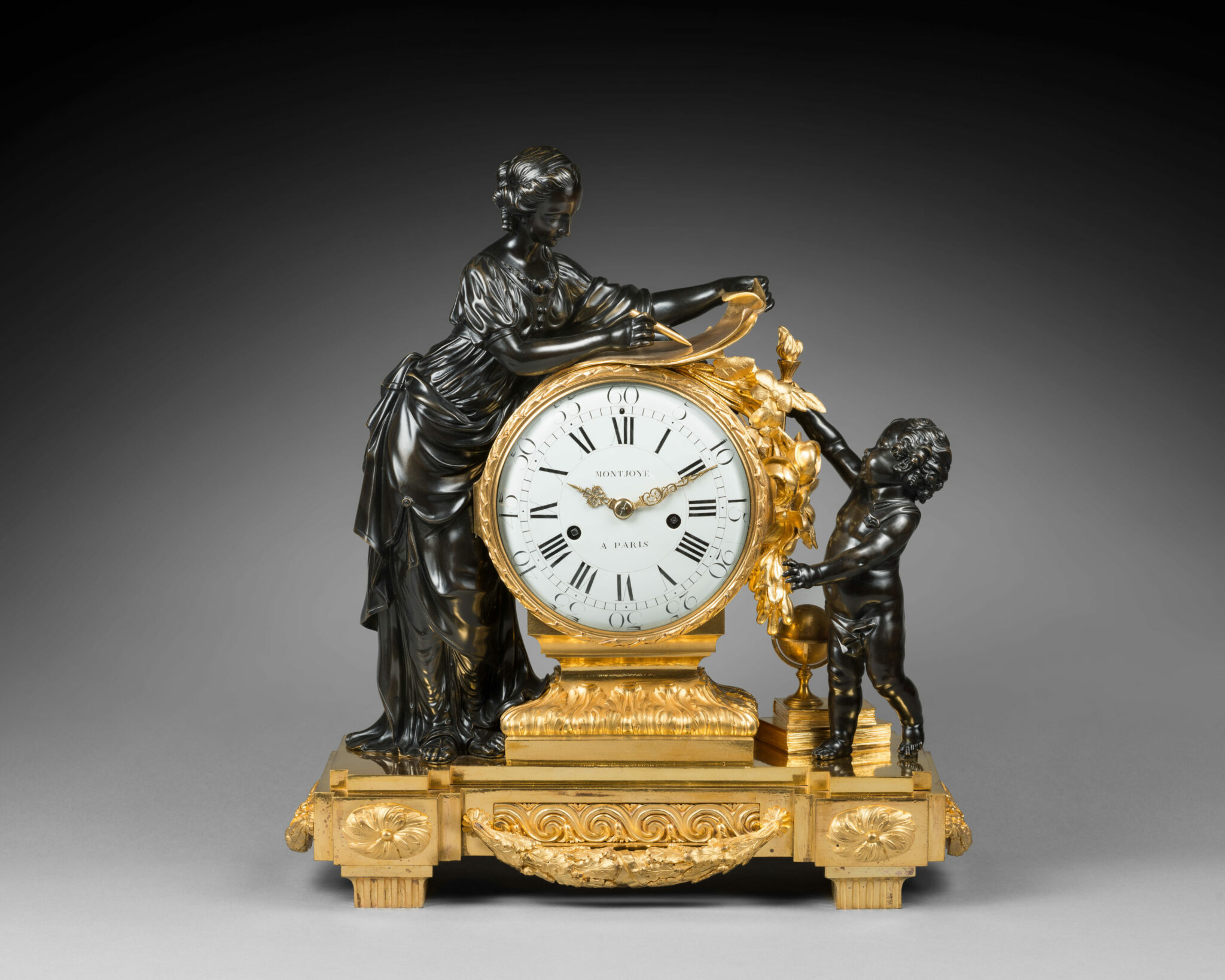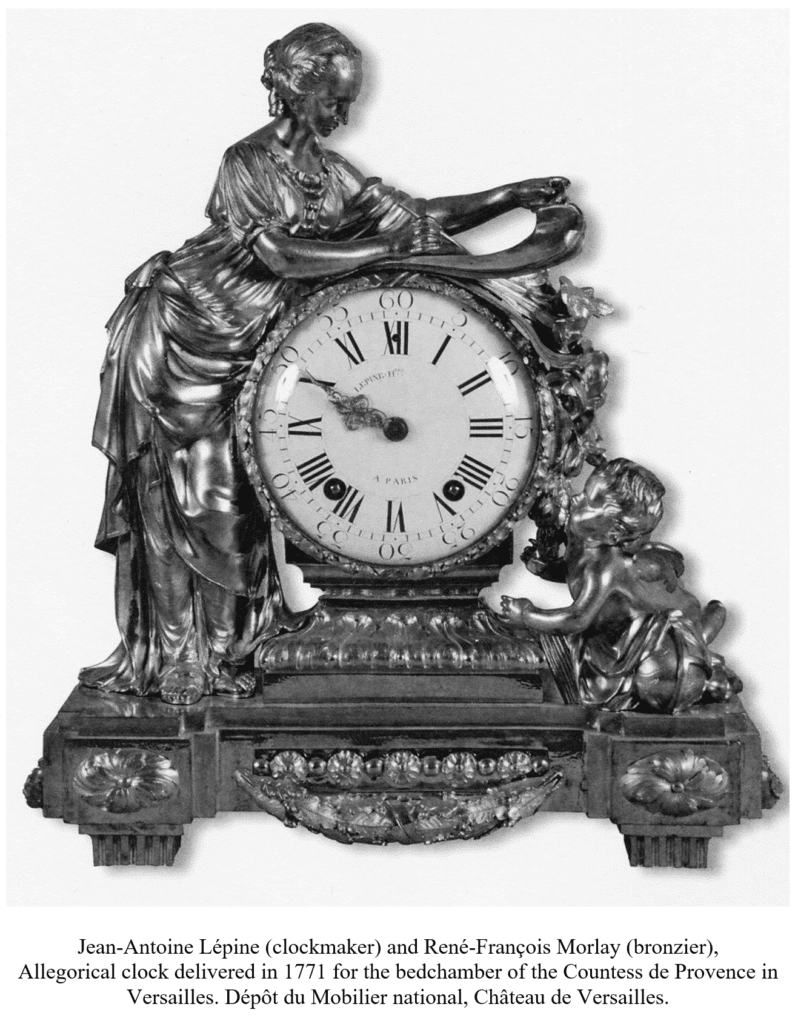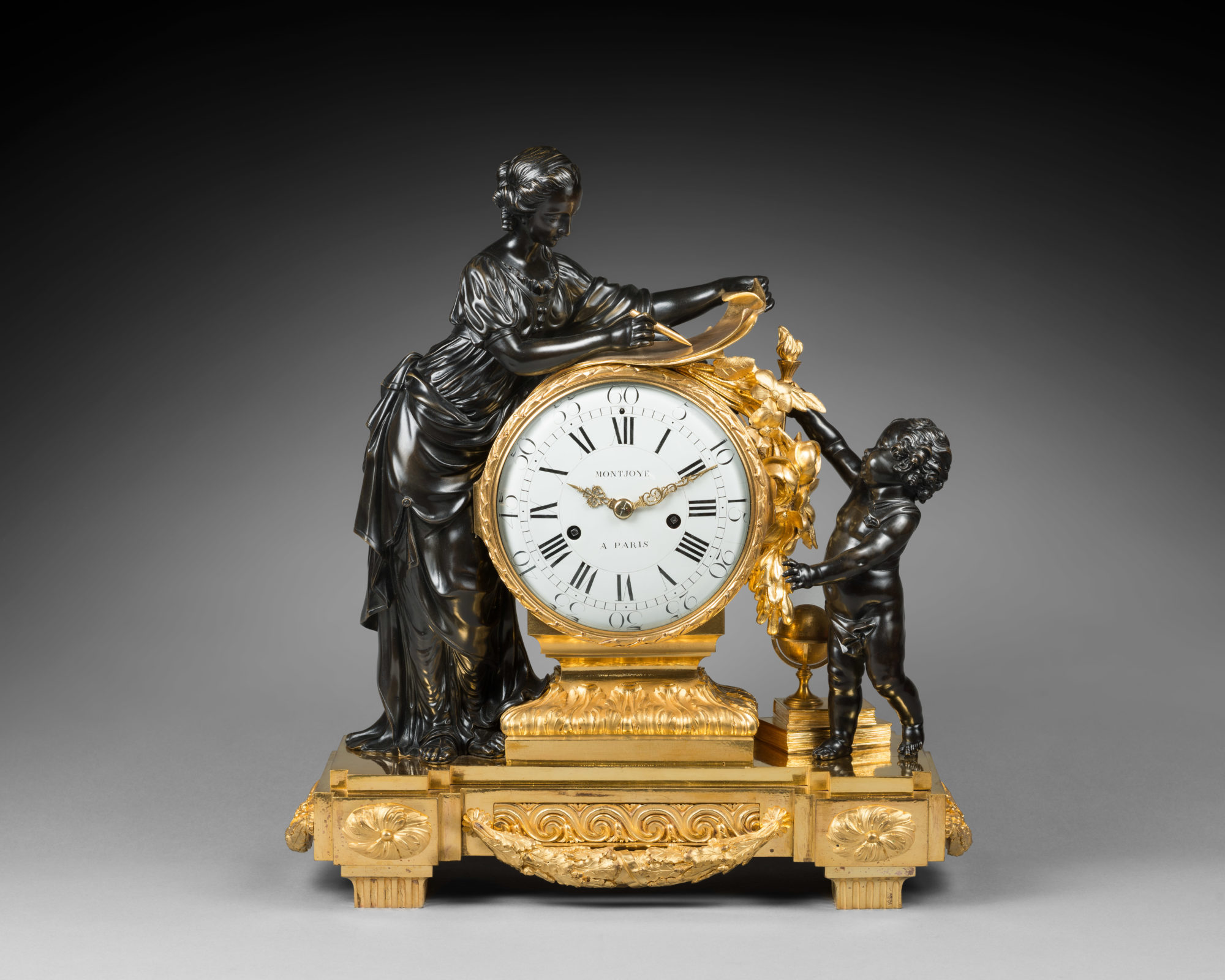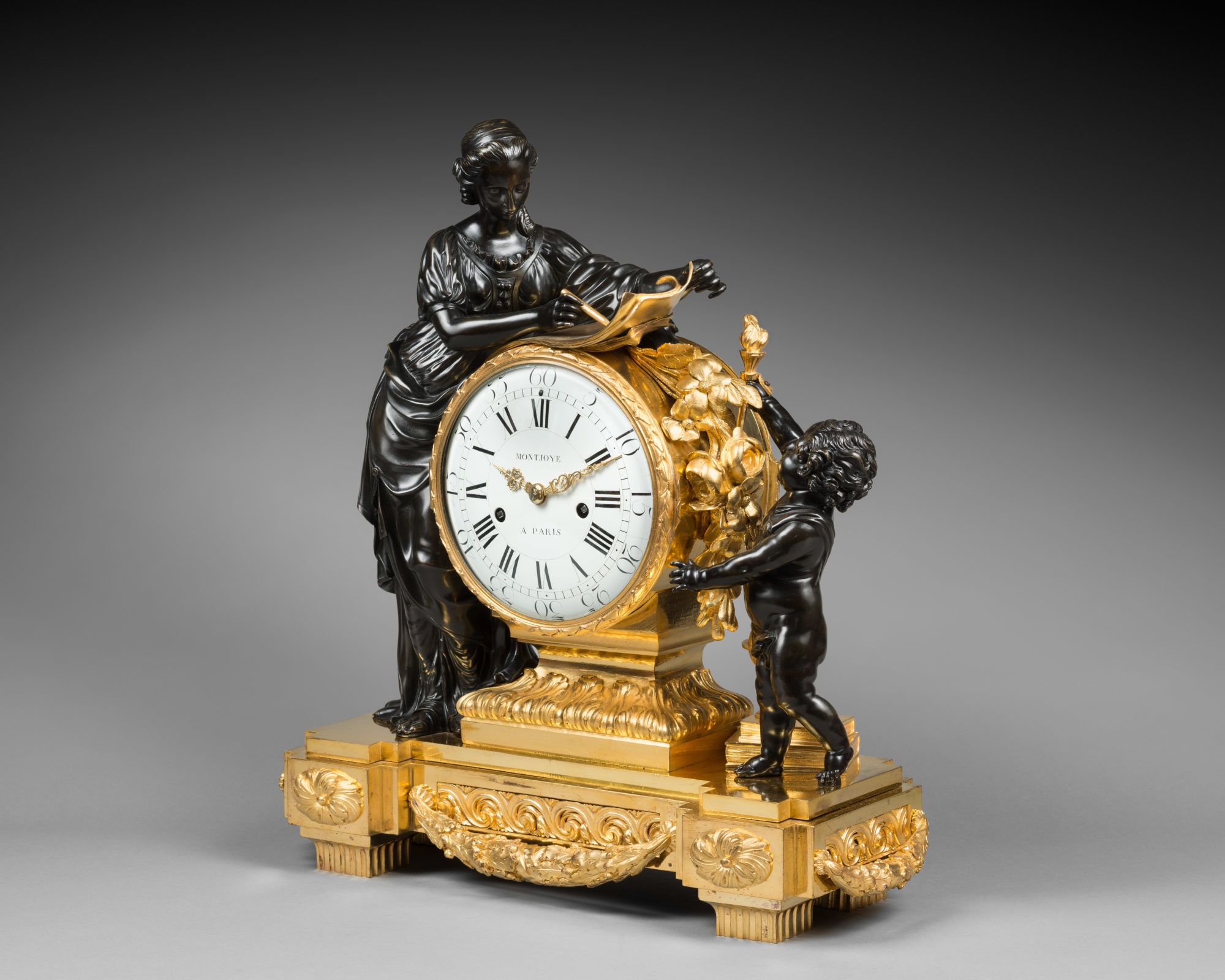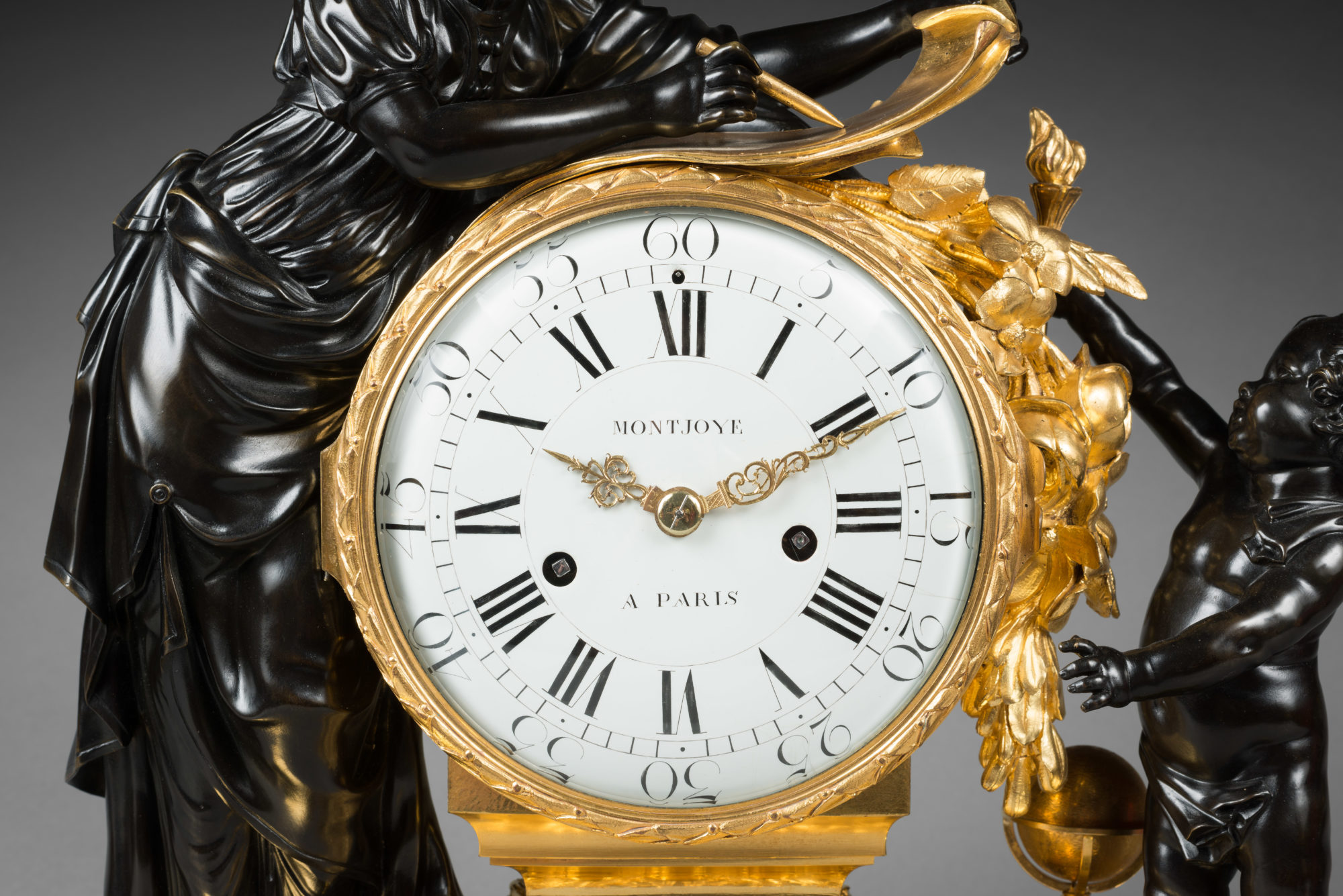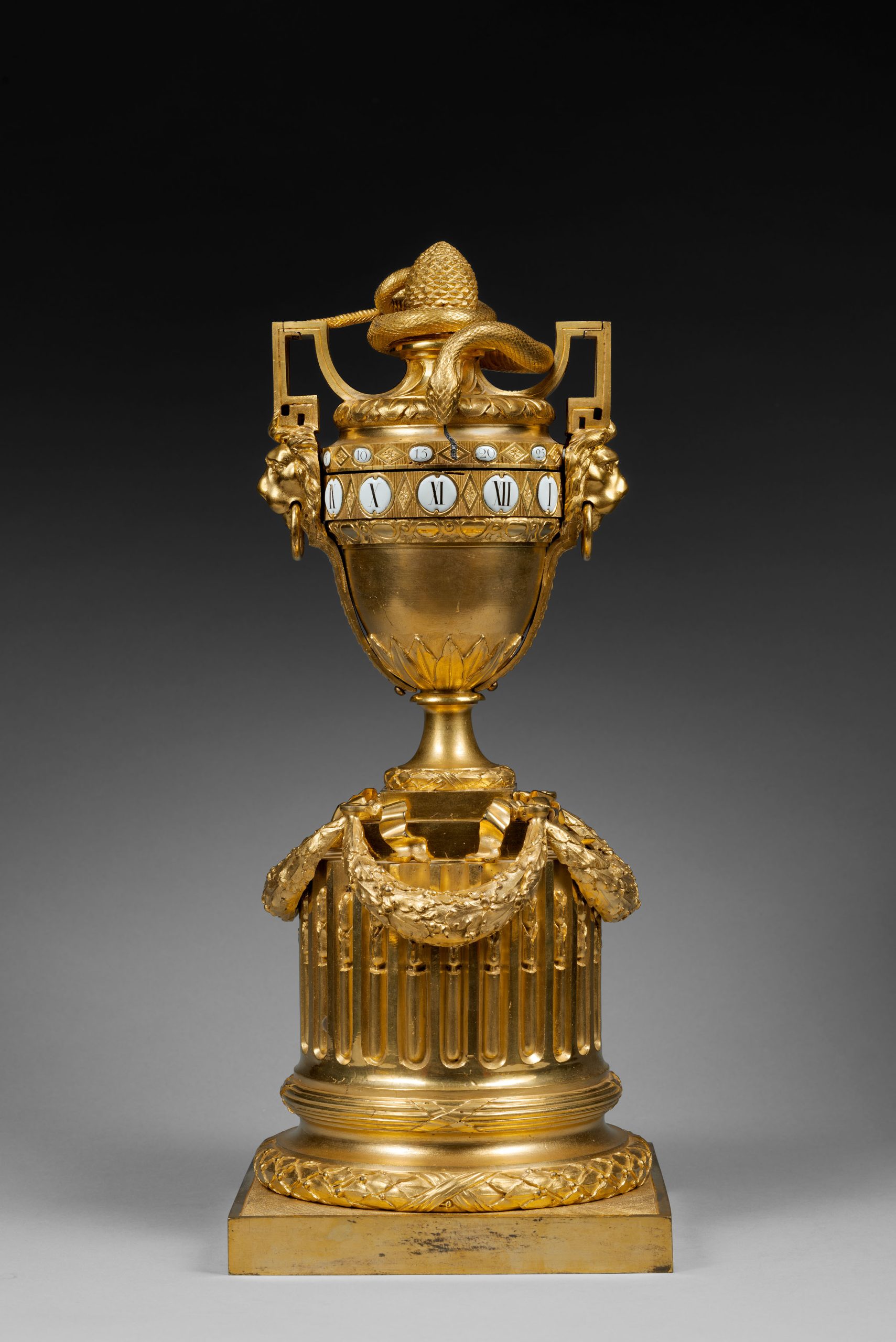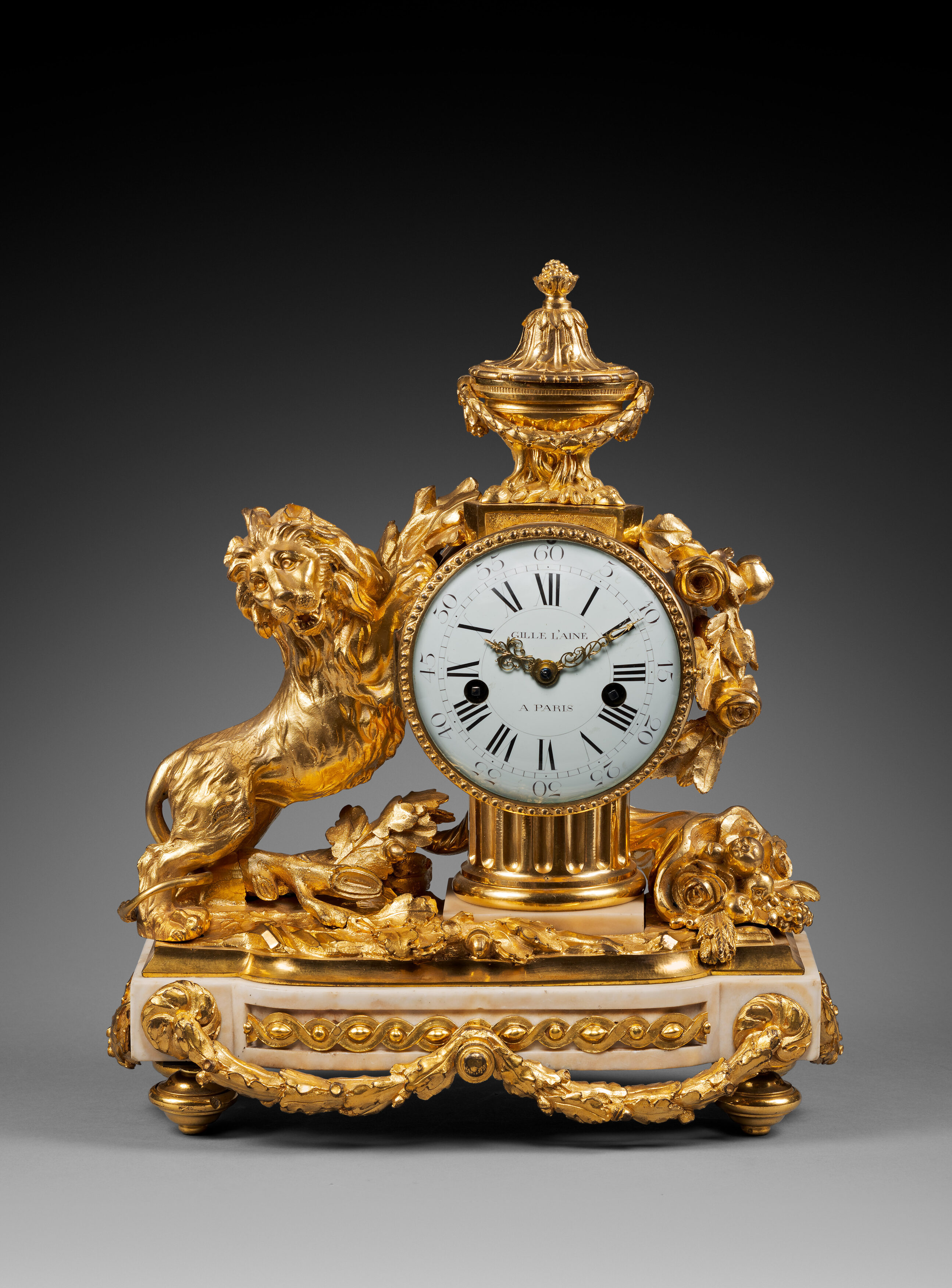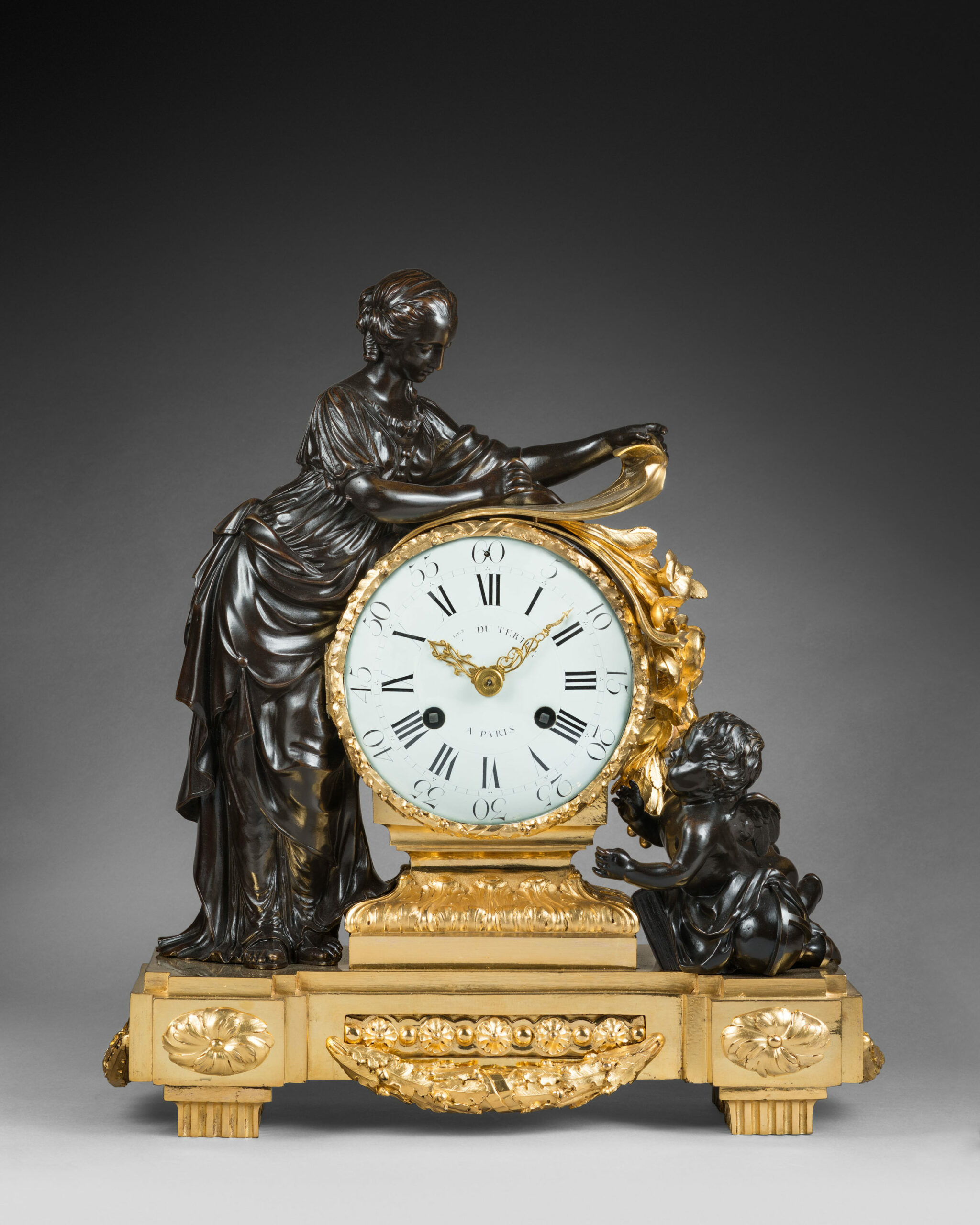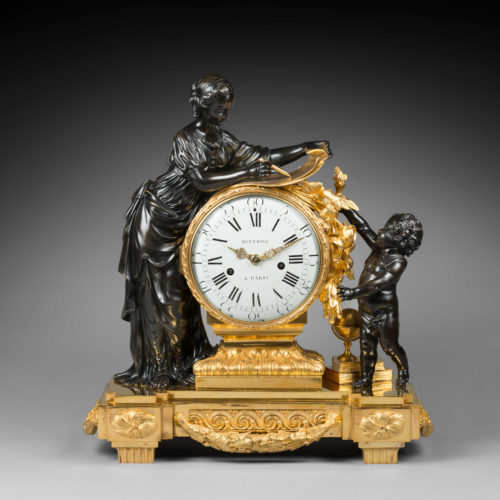Important Gilt and Patinated Bronze Mantel Clock
“Clio or an Allegory of History”
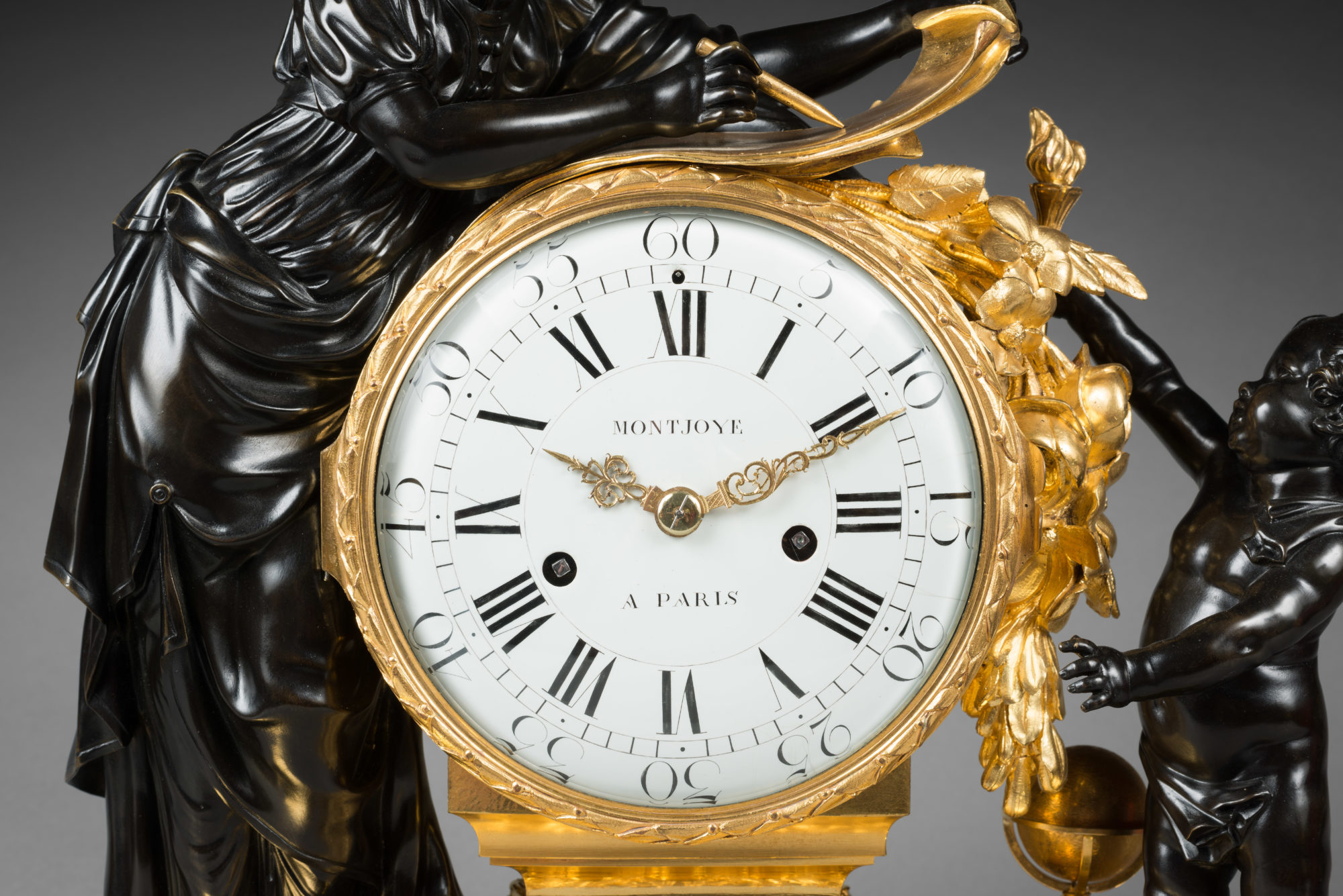
“Montjoye à Paris”
Case Attributed to René-François Morlay
Paris, Louis XV-Louis XVI transitional period, circa 1770-1775
The round white enamel dial, signed “Montjoye à Paris”, indicates the Roman numeral hours and the Arabic five-minute intervals by means of two pierced gilt bronze hands. It is housed in a gilt and patinated bronze case. A fine female figure symbolizing the muse Clio, is dressed in a classical toga and laced sandals, and wears her hair in a bun. She stands to one side, examining a parchment engraved with geometrical motifs. On the other side of the case, there is a garland of leaves and flowers; beside it, a young winged putto observes the Muse. He is standing with a globe, the symbol of knowledge, beside him. The shaped quadrangular base is decorated with motifs including garlands of oak leaves and acorns, rosettes and friezes of alternating cabochon and stylized flower motifs within sunken reserves. The clock is raised upon four fluted straight quadrangular feet.
Discover our entire collection of antique mantel clocks for sale online or at the gallery.
Relatively close to a number of similar models by Parisian bronze casters of the time, such as Robert Osmond and Jean-Joseph de Saint-Germain, the present clock may be attributed to the Parisian bronzier René-François Morlay, the creator of a magnificent carillon clock that was formerly in the collection of the Marquis of Hertford, today in the Wallace Collection in London (see P. Hugues, The Wallace Collection, Catalogue of Furniture, London, 1996, p. 418-425). Morlay made a clock identical to the present one; it bears his signature stamped in the bronze (see J-D. Augarde, Les ouvriers du Temps, Geneva, 1996, p. 293, fig. 223).
Among the rare identical clocks known, one example was formerly in the collection of Count Jacques de Bryas; it was sold in 1898 (sold Paris, Me Chevallier, Galerie Georges Petit, April 5-6, 1898, lot 242). A second example, whose dial is signed “Filon”, is illustrated in P. Kjellberg, Encyclopédie de la pendule française du Moyen Age à nos jours, Paris, 1997, p. 244, fig. A. One further similar clock of the same model, which was delivered in December 1771 for the chamber of the Countess de Provence in Versailles, and now in the Mobilier national, is displayed in the Musée national du Château de Versailles (illustrated in the exhibition catalogue Le château de Versailles raconte le Mobilier national, Quatre siècles de création, 20 September 2010-11 December 2011, p. 137).
Louis Montjoye (1729 - circa 1815)
This is the signature of Louis Montjoye, one of the foremost Parisian clockmakers of the second half of the 18th century. After becoming a maître in August 1748, he opened a workshop in the rue Dauphine, gaining immediate recognition among Parisian connoisseurs of fine horology. He worked for many of the most important merchants of the time, including Dominique Daguerre, and collaborated with remarkable artisans such as Charles Cressent, Jean-Joseph de Saint-Germain, François Rémond and the Osmond family of bronze-casters, for his clock cases. During the 18th century, his pieces were in the collections of the Duchess of Mazarin, the Duke of Richelieu and the Count of Vaudreuil; during the Revolutionary period one of his clocks was recorded as being in the Château de Montreuil in Versailles, which was the home of Louis XVI’s sister Madame Elisabeth.
François-René Morlay became a maître fondeur in 1756.
